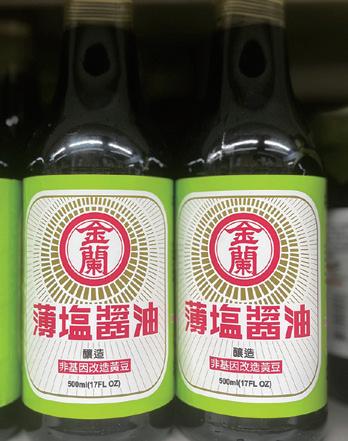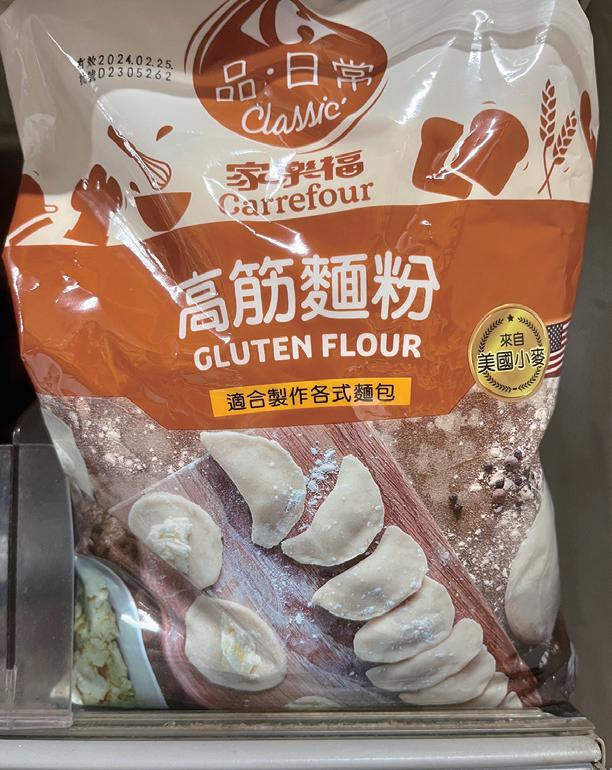
3 minute read
to Shopping in a Taiwanese Supermarket Guide
If it’s your first visit to Taiwan, then going shopping in a local supermarket could be tricky, especially if you can’t speak or read Chinese. So, I prepared a small guide that could hopefully make your daily shopping easier!
Soy Sauce
(jiang you)
Born in Beijing, Margot was introduced to the secrets of tasty Chinese cuisine alongside her mother and grandmother. She did her first jiaozi (dumplings) and her first dough for bao there, where she learned all the gestures and tricks, as naturally passed from mother to daughter.
Since her arrival in France, she has taught Mandarin in several French universities. In 2008, she created a blog to share her simple and authentic cuisine and quickly established herself as a reference in Chinese cooking within the French-speaking blogosphere: recetteschinoises.blogspot.com https://recetteschinoises.blogspot.com/ Facebook https://www.facebook.com/recettesdunechinoise kjWhen living in Taiwan, you may want to cook some basic Chinese dishes, and the first condiment you must have is soy sauce. The shelves of soy sauce in an Asian supermarket are as long as the shelves of yoghurt in Europe. Here are some tips on how to choose a good one:
Margot is also the author of several Chinese cook books, dating back to 2015. Now back in Asia, she continues her professional activities around writing cook books, hosting cooking classes and consulting for professionals.

To start, it is better to choose an all-purpose one, which suits all kinds of cooking.
Always read the ingredients list of the soy sauce. The shorter the list, the better, because that means it’s a natural one without any food additives.
Here are two soy sauces that I frequently buy in the supermarket:

1. Jinlan soy sauce, with zero additives 金籣無添加原味酱油

2. Wan jia xiang naturally brewed soy sauce, with zero additives 萬家香 零添加纯釀酱油

Tips: Soy sauce is a fermented product, it’s better to keep it in the refrigerator, if you can’t finish it quickly.
If the basic soy sauce is too salty for you, then the one with reduced salt is an option, but they contain more additives. What I usually do at home is mix some water with the all-purpose soy sauce to make it less salty.
Wheat Flour 麵粉 (mian fen)

Wheat flours in Asia are classified by their gluten strength . There are generally 3 types of flour: the low strength gluten flour 低筋麵粉, the medium strength gluten flour 中筋麵粉 and the high strength gluten flour 髙筋麵粉. The medium one is the equivalent to the all-purpose flour in Europe, the low one is good for making cakes or muffins and the high gluten flour is for baking heartier items, like brioche, bread or pizza dough.


You can also choose whole-wheat flour to make bread or brioche, but it is not suitable for Chinese dumplings (jiao zi).
Rice 米 (mi)
There are so many choices of rice in Taiwan, we can easily get lost. Taiwanese rice is classified by the place of production and the type of rice. There are two main types of rice. The Japonica rice 梗米 has a short, rounded shape and a soft and chewy texture. Most of the rice sold in Taiwan is this type of rice. The other type is the Indica rice 籼米, which has a long and thin shape, and is much less sticky than the Japonica one. Local Indica rice is rare, so if you like this variety, it is better to buy Thai rice or Indian rice. Personally, I appreciate the rice produced in Hualien 花蓮, Taitung 台東 and Yilan 宜籣.


Taiwanese rice is really delicious, but you need to follow the right cooking instructions, as indicated on the package. The use of a ricecooker is recommended, or, if you don’t have one, you can steam it or just cook it in a saucepan.

Here is a very simple way to cook Taiwanese rice: 1 cup of round rice and 1,1 to 1,2 cups of pure, or mineral water
Wash the rice several times with running water. Drain it and then add the pure or mineral water. Put it all in the rice-cooker or in the saucepan.Leave it for 10 minutes before cooking. If you choose the saucepan, bring it to boil, then lower the heat to minimum and cover with a lid. Keep cooking for about 20 minutes until there is no more liquid inside. Turn off the heat and leave it for 5-10 minutes before serving.











